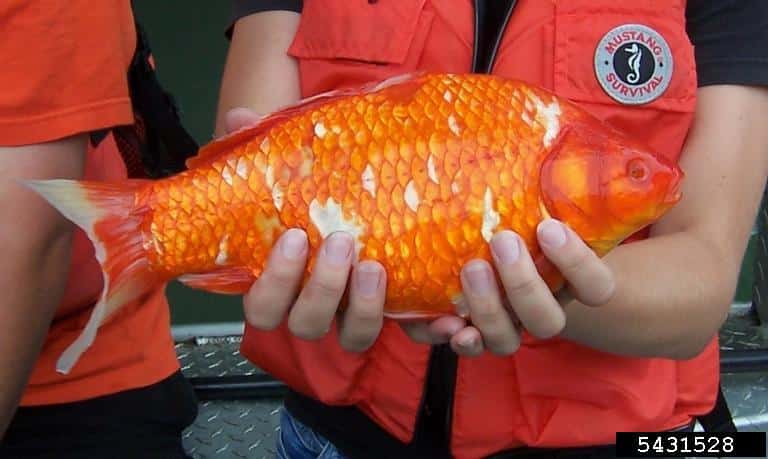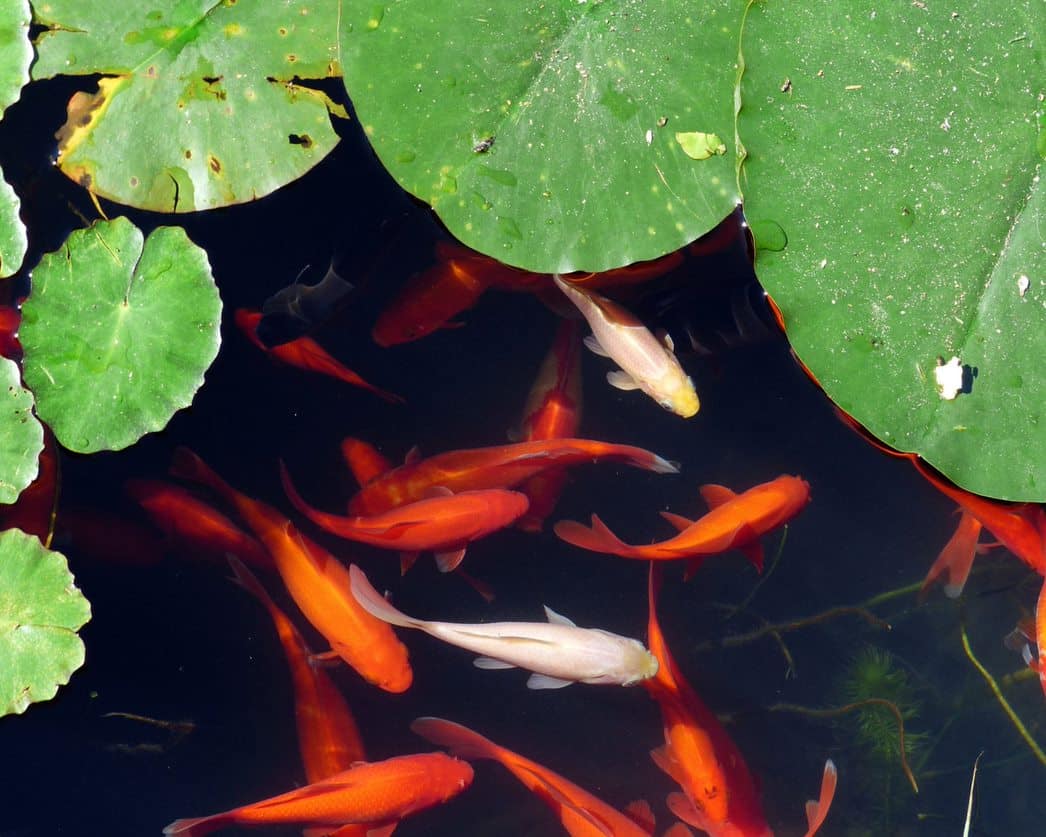By Craig Stephani | November 28th, 2022
Have you heard about ‘The Carrot’ that’s been making headlines around the world? No, it isn’t the latest and greatest superfood – it is a gigantic Koi!
This 67.4-pound fish was caught at Bluewater Lakes, a carp fishery in Champagne, France.
Koi (Cyprinus rubrofuscus) are a carp species that are closely related to Goldfish (Carassius auratus). Both are popular aquarium and backyard pond pets, come in a variety of colours, and can even interbreed resulting in many different body forms. But there’s one way to easily tell them apart. Koi have feelers that look like whiskers around their mouths, called barbels. Goldfish don’t have these. While Goldfish don’t get as large as Koi, they can still grow to be a lot larger than you might expect. Goldfish found in Dragon Lake, BC, were recorded at 30 cm long and weighing 650 g. That’s a bit larger than a CFL football!

Despite their popularity, these fish species can be highly invasive and are difficult to remove from the environment once they have established themselves. Whether Goldfish or Koi, it is critical that these pet fish never escape an ornamental backyard pond or be set free from a household aquarium or fishbowl. Goldfish have been found throughout southern BC, most often in lakes and streams near populated areas. They typically end up in BC waterways unintentionally during flooding – as we experienced in the 2021 atmospheric river events – or intentionally when owners release their pets.

Although Goldfish prefer to swim in shallow, slow-moving waters, they can survive in water temperatures ranging from 0-41°C, and in water with very little oxygen. This makes them a threat to most freshwater environments in BC. And they’re not picky eaters. They’ll eat just about anything.
“Goldfish have a broad omnivorous diet,” said Dr. Nick Wong, ISCBC’s manager of Science and Research. “They feed on aquatic plants, small invertebrates, and the eggs and fry of other fish. This can include culturally important species or species at risk.”
Their flexible diet, combined with their ability to survive in a variety of habitats, means they can spread fast and take a big bite out of populations of native species. Goldfish are also very messy eaters!
“When they feed, they decrease water clarity by stirring up sediment from the bottom, which prevents sunlight from reaching aquatic plants,” added Dr. Wong. “This limits plant growth, reducing food and habitat for many aquatic species. All these impacts combined can significantly reduce the biological diversity of a water body.”
Ensuring neither Koi nor Goldfish ever enter our natural waterways is critical. May ‘The Carrot’ live long and comfortably in captivity, but may he never, ever escape.
Preventing the spread of invasive species and protecting our waterways is easy. Here’s how you can help!
- If you are unable to care for a pet Goldfish, Don’t Let It Loose! To learn more about the impacts of invasive pet and aquarium species and how you can make a difference, take our FREE eCourse.
- If you suspect you have found Goldfish in BC waters, you can report them using the Report Invasives App, available for Apple or Android devices, or by contacting ISCBC at info@bcinvasives.ca or 1-888-933-3722.
- Spread the word, not invasives! Share this or any of our other articles with friends and family – awareness is a key component to stopping the spread of invasive species.
Craig is an Outreach Lead at ISCBC. He is passionate about sharing his excitement for nature with others. In his spare time, he enjoys hiking, camping and exploring wild areas near and far. You can reach Craig at cstephani@bcinvasives.ca
Share


















